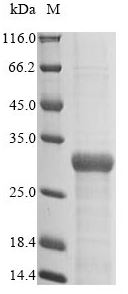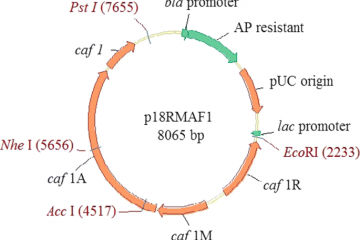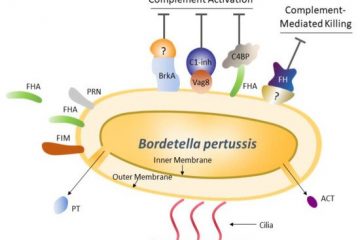Product Details
| Uniprot No. | P09326 | ||||||||
| Target Names | CD48 | ||||||||
| Alternative Names | Antigen CD48 antibody; B cell membrane protein antibody; B lymphocyte activation marker BLAST 1 antibody; B-cell activation marker antibody; B-lymphocyte activation marker BLAST-1 antibody; BCM 1 surface antigen antibody; BCM1 antibody; BCM1 surface antigen antibody; BLAST 1 antibody; BLAST antibody; BLAST1 antibody; CD 48 antibody; CD48 antibody; CD48 antigen (B cell membrane protein) antibody; CD48 antigen antibody; CD48 molecule antibody; CD48 protein antibody; CD48_HUMAN antibody; hCD48 antibody; Leucocyte antigen MEM 102 antibody; Leukocyte antigen MEM-102 antibody; mCD48 antibody; MEM 102 antibody; MEM-102 antibody; MEM102 antibody; Signaling lymphocytic activation molecule 2 antibody; SLAM family member 2 antibody; SLAMF 2 antibody; SLAMF2 antibody; TCT.1 antibody | ||||||||
| Raised in | Rabbit | ||||||||
| Species Reactivity | Human,Mouse | ||||||||
| Immunogen | Synthetic peptide of Human CD48 | ||||||||
| Immunogen Species | Homo sapiens (Human) | ||||||||
| Conjugate | Non-conjugated | ||||||||
| Isotype | IgG | ||||||||
| Purification Method | Antigen affinity purification | ||||||||
| Concentration | It differs from different batches. Please contact us to confirm it. | ||||||||
| Buffer | -20°C, pH7.4 PBS, 0.05% NaN3, 40% Glycerol | ||||||||
| Form | Liquid | ||||||||
| Tested Applications | ELISA,WB,IHC | ||||||||
| Recommended Dilution |
|
||||||||
| Protocols | ELISA Protocol Western Blotting(WB) Protocol Immunohistochemistry (IHC) Protocol |
||||||||
| Troubleshooting and FAQs | Antibody FAQs | ||||||||
| Storage | Upon receipt, store at -20°C or -80°C. Avoid repeated freeze. | ||||||||
| Lead Time | Basically, we can dispatch the products out in 1-3 working days after receiving your orders. Delivery time maybe differs from different purchasing way or location, please kindly consult your local distributors for specific delivery time. |

fimH Antibody
Functions:
Involved in regulation of length and mediation of adhesion of type 1 fimbriae (but not necessary for the production of fimbriae). Adhesin responsible for the binding to D-mannose. It is laterally positioned at intervals in the structure of the type 1 fimbriae. In order to integrate FimH in the fimbriae FimF and FimG are needed.
- Conformational switch of the bacterial adhesin FimH in the absence of the regulatory domain. PMID: 29180452
- Evolutionary fine-tuning of conformational ensembles in FimH during host-pathogen interactions. PMID: 28246638
- A mutant missing the type 1 pilus-associated adhesin FimH displayed somewhat reduced persistence within the gut. PMID: 29311232
- The authors demonstrated that FimH residues E50 and T53 are crucial for adhesion under flow conditions. PMID: 27816993
- In the absence of tensile force, the FimH pilin domain allosterically accelerates spontaneous ligand dissociation from the FimH lectin domain by 100,000-fold. PMID: 26948702
- mouse urothelium responds to the adhesion of type 1-fimbriated UPEC by activating dual ligand/receptor system, one between FimH adhesin and uroplakin Ia and another between lipopolysaccharide and Tlr4. PMID: 26549759
- Luteolin decreased the attachment and invasion of UPEC in bladder epithelial cells down-regulating the expression of adhesin fimH gene PMID: 25051393
- Data indicate that thiazolylaminomannosides prevented bacterial attachment to the gut by blocking the FimH bacterial adhesin. PMID: 23795713
- New promising vaccine combinations based on the FliC antigen against urinary tract infections caused by uropathogenic Escherichia coli. PMID: 23220068
- analyzed mutational patterns in the fimH gene of mucosa-associated E. coli strains isolated from IBD and non-IBD pediatric patients to investigate microevolution of this genetic trait; study found some FimH variants that seem to be more involved than others in evolution of inflammatory bowel disease pathogenesis PMID: 22290143
- FimH elicits an immune response that enhances cell adhesion of Escherichia coli. PMID: 21768279
- Study presents the crystal structure of FimH incorporated into the multiprotein fimbrial tip, where the anchoring (pilin) domain of FimH interacts with the mannose-binding (lectin) domain and causes a twist in the beta sandwich fold of the latter. PMID: 20478255
- Co-immunoprecipitation experiments in the presence of alpha-methyl mannose verified the binding of Escherichia coli FimH to ATP synthase beta-subunit of human brain microvascular endothelial cells. PMID: 20067530
- the single A62S mutation altered phase variation, reducing the proportion of piliated cells, reduced mannose binding 8-fold, and decreased bladder colonization 30-fold in vivo compared to wild-type PMID: 20018753
- FimH adhesin activated the murine microglial cell line, BV-2, which resulted in the production of nitric oxide and the release of tumor necrosis factor-alpha. PMID: 16036224
- analysis of trimannose versus monomannose interactions with the FimH adhesin of Escherichia coli PMID: 16624825
- Stability of the FimH-mannose bond. PMID: 16933977
- findings indicate that FimH induces host cell signalling cascades that are involved in E. coli K1 invasion of human brain microvascular endothelial cells (HBMEC) and CD48 is a putative HBMEC receptor for FimH PMID: 17222190
- Functional trade-offs may determine the natural populational instability of this mutation or other pathoadaptive FimH mutations that confer dramatic increases in 1M binding strength. PMID: 17502398
- analysis of how interdomain interactions in the FimH adhesin of Escherichia coli regulate the affinity to mannose PMID: 17567583
- Data show that removal of the cysteine bond in the mannose-binding domain of FimH did not affect FimH-mannose binding under static or low shear conditions, but the adhesion level was substantially decreased under increased fluid flow. PMID: 17697252
- integrin-like allosteric link between the binding pocket and the interdomain conformation can serve as the basis for the catch bond property of FimH and, possibly, other adhesive proteins. PMID: 18174167
- Deletion of fimH resulted in lost of agglutination ability. PMID: 18438011
- Naturally occurring mutations in the signal peptides of the adhesive, tip-associated subunit of type 1 fimbriae (FimH) are positively selected in uropathogenic Escherichia coli. PMID: 18664574
- The authors show by cryo-electron microscopy that FimH binding to the extracellular domain of UP Ia induces global conformational changes in the entire UP receptor complex, including a coordinated movement of the tightly bundled transmembrane helices. PMID: 19577575
[Linking template=”default” type=”products” search=”fimH Antibody” header=”2″ limit=”21″ start=”3″ showCatalogNumber=”true” showSize=”true” showSupplier=”true” showPrice=”true” showDescription=”true” showAdditionalInformation=”true” showImage=”true” showSchemaMarkup=”true” imageWidth=”” imageHeight=””]


